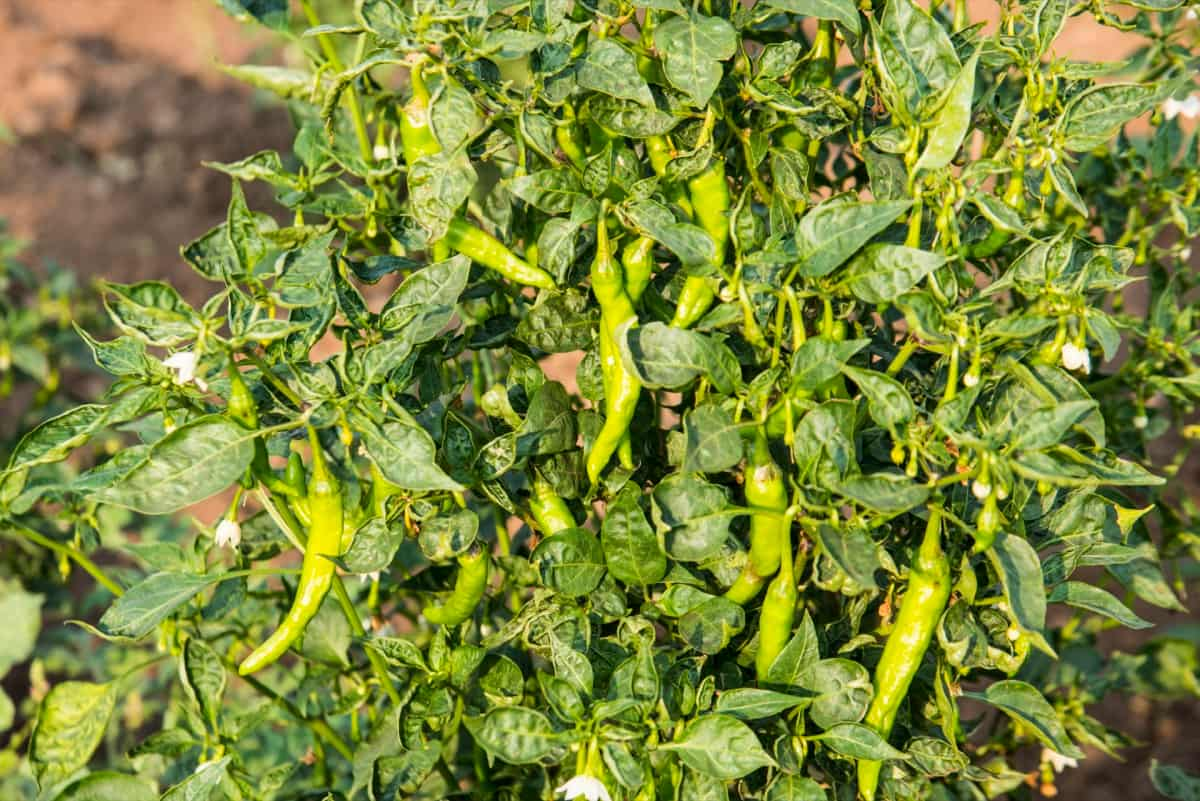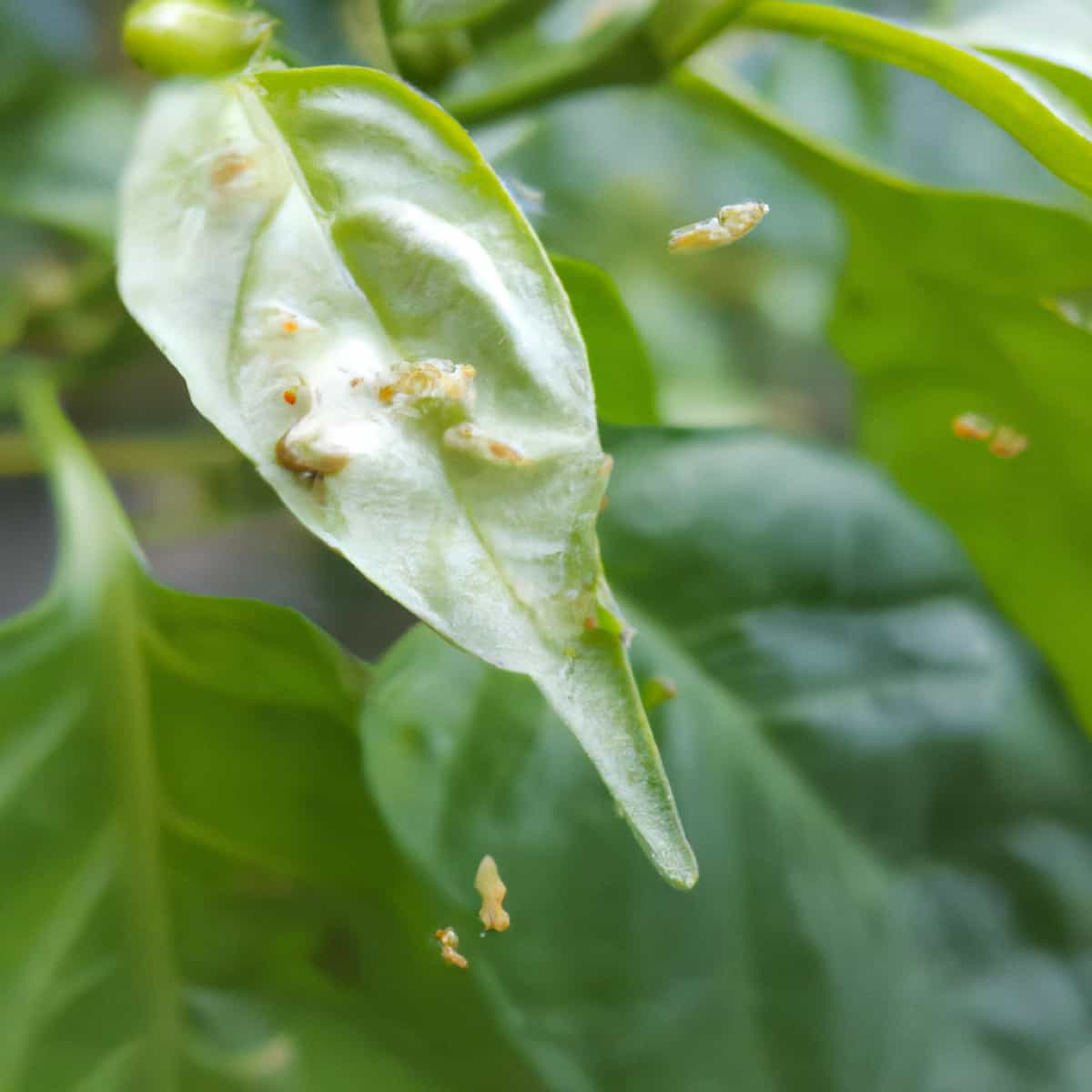The Chilli Aphid, Myzus persicae, belonging to the Family Aphididae of the Order Hemiptera, is a serious pest that causes significant yield losses and reduces the quality of crops worldwide. This pest is commonly known as Chilli Green Peach Aphid. It can transmit viruses such as Turnip Yellow Virus TuYV (aka. Beet Western Yellow Virus BWYV), Cauliflower Mosaic Virus CaMV, Turnip Mosaic Virus TuMV, and Cucumber Mosaic Virus (CMV).

It is a highly destructive insect that feeds on the sap of Chilli plants. They reproduce rapidly and can produce many generations in a single growing season, making them a persistent and challenging pest to control. To mitigate the impact of Chilli aphids, farmers may use various control methods, including cultural practices, such as crop rotation and intercropping, and chemical controls, such as insecticides.
To effectively manage this pest, it is important to understand its life cycle, its preferred habitats, and the best methods for controlling it. This article will provide an overview and discussion of the Chilli Aphid Pest in Chilli crops, including its symptoms, identification techniques, and control.
Chilli Aphid Pest Management
Life Cycle of Chilli Aphid Pest in Chilli Crop
The life cycle of the Chilli Aphid pest has four stages. They are egg, nymph, pupa, and adult. The life cycle of the Chilli aphid begins with the egg stage. Female aphids deposit eggs on the stems and leaves of Chilli plants in the fall, which overwinter until spring when conditions become favorable for hatching. After hatching, the Chilli aphid enters the nymph stage, during which it undergoes several molts, shedding its skin and growing larger with each molt. The nymphs closely resemble the adult aphids but are smaller and lack wings. ]
During this stage, the aphids feed on the sap of the Chilli plant and can cause significant damage. Once the nymph reaches maturity, it molts into the adult reproductive stage of the aphid lifecycle. Adult Chilli aphids are winged and can fly to other plants to feed and lay eggs. The females can produce up to 80 offspring, and the cycle repeats. The entire lifecycle can be completed in as little as two weeks, which allows for rapid population growth and can lead to significant infestations in a short period.
Occurrence of Chilli Aphid Pest in Chilli Crop
- Location of Chilli Aphid pest: This pest infests Chilli crops in India, Bangladesh, Nepal, Africa, Sri Lanka, China, Thailand, Malaysia, Vietnam, Indonesia, the United States, Mexico, Brazil, Colombia, Ecuador, the Philippines, and Australia.
- Host range: The Chilli Aphid pest infects crops like Chilli, Bell Peppers, Eggplants, Tomatoes, and Potatoes.
Factors Favoring the Population Increase of Chilli Aphid Pest in Chilli Crop
- Temperature: The Chilli aphid prefers temperatures between 20-30°C. At temperatures above 30°C, the pest’s reproduction rate decreases and becomes less active.
- Humidity: High humidity levels above 70% provide favorable conditions for the Chilli aphid to thrive.
- Low Rainfall: While high humidity levels favor the Chilli aphid, excessive rainfall can wash away the pest, reducing its population.
- Low Winds: The Chilli aphid is a weak flier and prefers to travel on foot or with the help of other insects.
- Plant Stress: Chilli plants under stress due to poor soil quality, water stress, or other factors are more susceptible.
- Early Planting: Planting Chilli crops early in the season can increase the risk of infestation, as the pest can overwinter on host plants and migrate to new crops in the spring.
Identification of Chilli Aphid Pest in Chilli Crop
- Egg: The eggs are small, elongated, and oval-shaped, measuring about 0.6-0.9 mm in length. They are light green, yellow, or orange and are often found in clusters.
- Nymph: The first instar nymphs are pale green and wingless, with a distinctive triangular shape. By the third instar, they have distinct black cornicles on the rear end of their bodies and develop legs and antennae.
- Adult: The adults are light green to dark green or black, approximately 1.5 to 2.0 mm long, and have pear-shaped bodies. They have long legs, wings, two thin antennae, and two small cornicles on the rear end of their bodies.
Damage Symptoms of Chilli Aphid Pest in Chilli Crop
- The characteristic symptom of pest infestation is that the affected plants turn pale and show a sticky appearance.
- The aphids produce a sticky substance called honeydew, which can promote the growth of sooty mold and attract other pests, such as ants.
- The sooty mold reduces photosynthesis, and the leaves curl and crinkle.
- The aphids feed on the sap of Chilli plants’ leaves, stems, and buds, causing stunted growth, wilting, and distortion of the plant’s tissues.
Percentage of Yield Loss in Chillis Due to Chilli Aphid Pest
- In India, the yield losses due to Chilli Aphid pests are 50%. In Bangladesh, the losses are 60%. In Nepal, the losses are 45%. In Thailand, the yield loss is 60%. In Malaysia, it is 50%. In Vietnam, the losses are 40%. In Sri Lanka, the losses are 50%. In Indonesia, the losses are 60%. In Africa, it is 80%. In the United States, it is 20%. In Mexico, it is 50%. In Brazil, it is 60%. In China, it is 40%.
- In Colombia, the losses are 50%. In Ecuador, it is 70%. In Australia, it is 20%. In the Philippines, the yield losses are 50%. The Economic Threshold Level (ETL) for the Chilli Aphid pest is 20-30% crop infestation.
In case you missed it: Chilli Yellow Mite Pest Management: Symptoms, Treatment, Chemical, Biological, and Organic Control

Cultural Control of Chilli Aphid Pest in Chilli Crop
- Crop Rotation: Rotate the Chilli crops with non-host plants such as legumes to break the pest’s lifecycle and reduce its population.
- Proper Irrigation: Irrigating the crop at the right time and using drip irrigation can help prevent excess moisture and reduce the risk of infestation.
- Soil Management: Maintaining healthy soil through proper fertilization and management practices can help reduce the crop’s susceptibility to the aphid pest.
- Inter-cropping: Planting Chilli crops along with other crops like onions or garlic can help deter the aphids from infesting the Chilli crop.
- Mulching: The mulching technique covers the soil with a layer of organic material such as straw or leaves. It helps regulate soil temperature, retain moisture, and suppress weed growth.
Biological Control of Chilli Aphid Pest in Chilli Crop
- Ladybugs: Ladybugs, also known as lady beetles, are voracious predators of aphids. They are attracted to Chilli crops and will feed on Chilli aphid pests.
- Lacewings: Lacewings are another predator of Chilli aphids. They have long, delicate wings and feed on soft-bodied insects like aphids.
- Parasitoid Wasps: Parasitoid wasps are natural enemies of Chilli aphids. They lay their eggs inside aphids, which then hatch and feed on the aphid from the inside out.
- Predatory Mites: Some mite species feed on Chilli aphids and are highly effective at controlling the pest but require careful management to ensure they do not harm the crop.
Chemical Control of Chilli Aphid Pest in Chilli Crop
- Spray insecticides like Methyl Demeton, Dimethoate, Fipronil, Imidacloprid, Carbosulfan, Phorate, Phosalone, Phosphomidon, Acephate, Monocrotophos, or Quinalphos on the foliage to control the pest.
- Soil Application: Mix granular insecticides like Carbofuran, Disulfoton, Aldicarb, or Phorate to control the pest.
- Seed Treatment: To prevent infestation, treat the seeds with Imidacloprid before sowing.
Organic Control of Chilli Aphid Pest in Chilli Crop
- Plant extracts from neem, garlic, tobacco, cinnamon, ginger, turmeric, hot pepper, and Chilli can be applied to manage the infestation.
- Spray Pyrethrum obtained from Chrysanthemum species on the plants to control the pest.
- Spinosad produced by the fermentation of soil bacterium Saccharopolyspora spinosa should be sprayed on the leaves and stems of Chilli plants to control the pest.
- Apply Beauveria bassiana fungus and Bacillus thuringiensis bacteria as biopesticides to kill the pest.
Preventive Measures for Control of Chilli Aphid Pest in Chilli Crop
- Screening: This technique involves covering Chilli plants with a fine mesh netting that prevents aphids from reaching the plants in a greenhouse or hydroponic Chilli crops.
- Reflective Mulch: This technique can help repel Chilli aphids by reflecting ultraviolet light, which can confuse and disorient the aphids. They are made from aluminum foil, silver plastic, or mylar.
- Insect-repelling Companion Plants: The plants such as garlic, chives, and coriander produce strong odors and flavors that repel the insects making the Chilli plants less attractive to the aphids.
- Monitoring: Monitor the crops regularly to identify pest infestation in the early stages to keep it under control.
In case you missed it: Chilli Fruit Borer Pest Management: Symptoms, Treatment, Chemical, Biological, and Organic Control

Conclusion
The Chilli Aphid Pest, Myzus persicae, is a serious pest that affects Chilli production worldwide, causing significant yield losses and economic damage. By adopting integrated pest management strategies incorporating cultural, biological, chemical, and preventive measures, growers can effectively manage Chilli aphids and minimize their impact on Chilli crops.
- Deworming Schedule for Dogs/Puppies: A Beginners Guide
- How to Prevent and Control Parasites in Goats
- Beneficial Insects in Pest Management
- Natural Solutions for Pest Control in Flower Gardens
- Types of Fungicides Used in Agriculture
- Common Issues in the Fruit Development Stage of Pomegranate Farming
- Fruit Development Issues in Papaya: Easy Solutions and Treatment
- Soil-Borne Diseases and How to Protect Your Plants
- Practices to Prevent Disease Spread in the Garden